She walks along the lake in a kimono, in the long legs of sunlight, I mistake her for spring.
Beautiful Emi wore a kimono with a gorgeous pink cherry blossom on the obi or sash of her kimono. Emi in her kimono, along with a soft sunset, made up for the late-blooming cherry trees in Kamakura, Japan.
Kimono comes in a range of designs and colors and rivals the beautiful florals in spring time. The kimono literally translates to “a thing to wear” in Japanese. Ironically, a kimono is a very formal and traditional Japanese attire for women, and not just any outfit.
We walked around the most important Shinto Shrine in Kamakura, called Trsurugaoka Hachimangu. It is located centrally, and a lovely and sacred place. Many Shinto weddings are held at Tsurugaoka Hachimangu because of its historical significance and landscape.
Below are portraits of Emi, looking absolutely elegant in a sophisticated kimono.
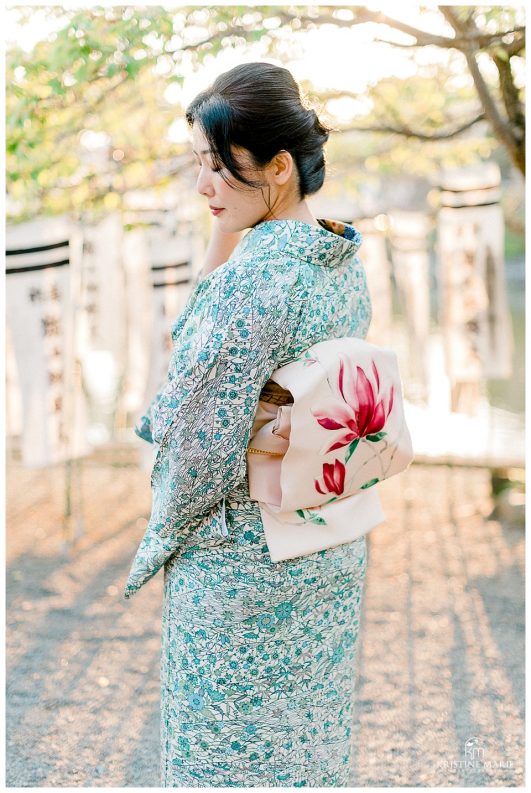
I love how wispy and wonderful Emi’s looks in this portrait.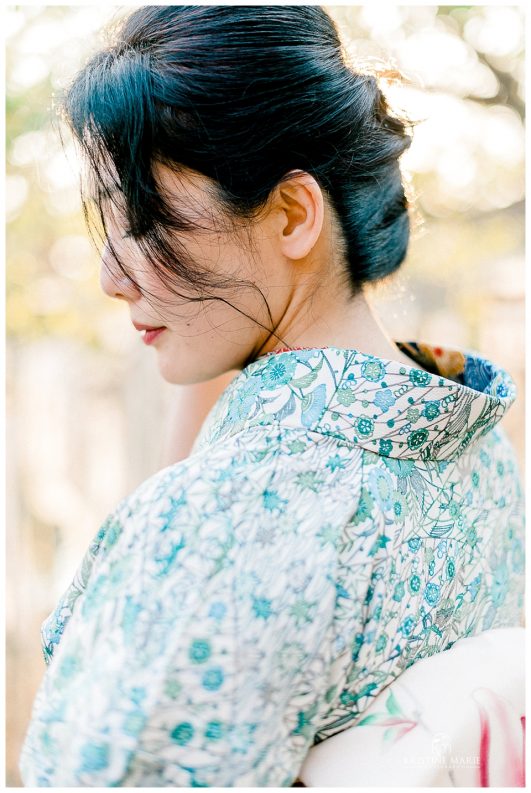
This was one of the first images I took of Emi during our portrait session in Kamakura. She looks lovely, doesn’t she? I love it when one of the first frames is easily one of my favorites. 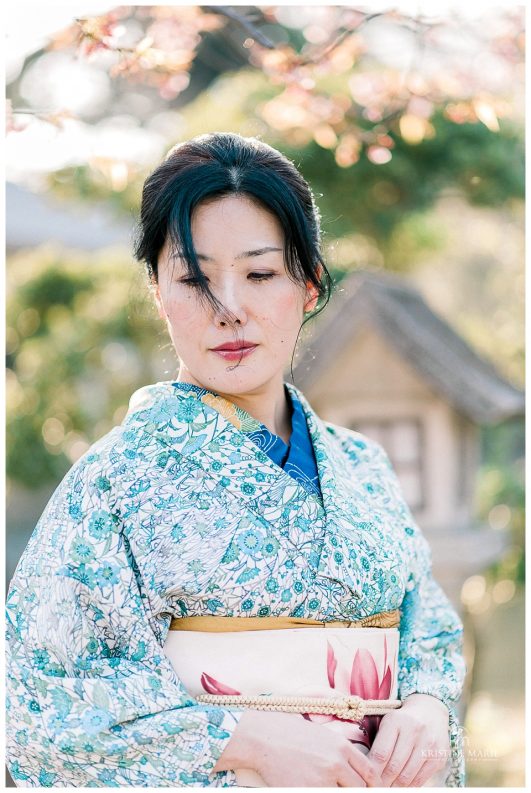
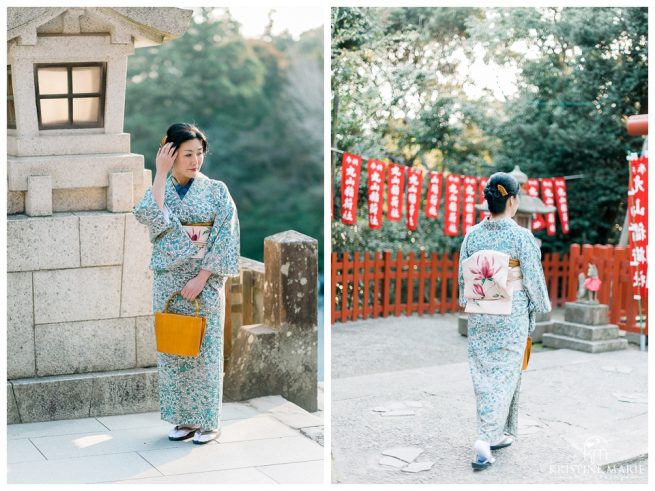
The “T” shaped robe with long, draped sleeves is always worn left to right (unless dressing the dead for burial). Layers of ornately designed fabric is layered for a sophisticated look.
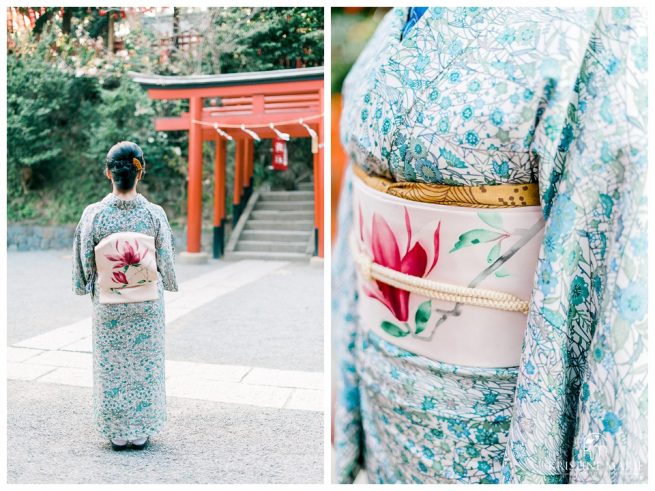
Emi wore a wooden hairpiece with carvings to accessorize her look.
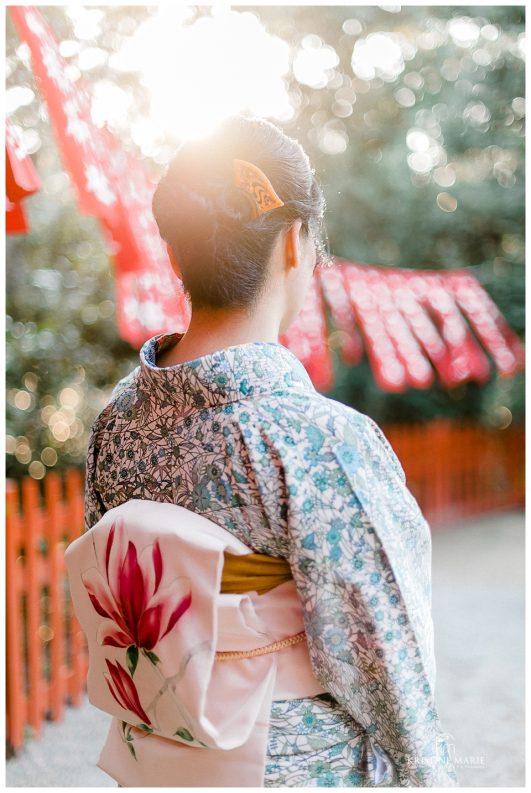
Traditional Japanese footwear is worn with a kimono. It is similar to thong sandals, worn with split-toe socks.
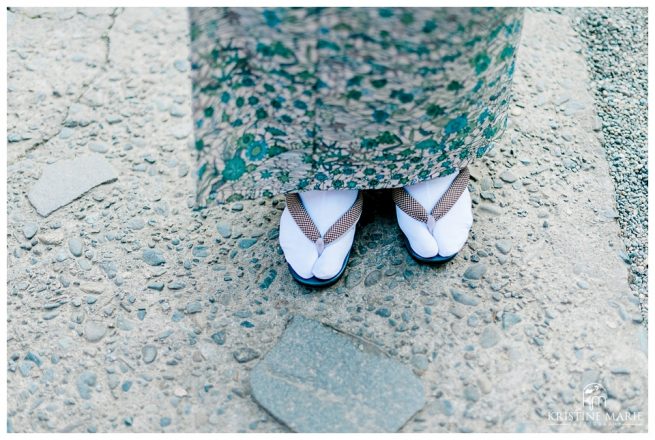
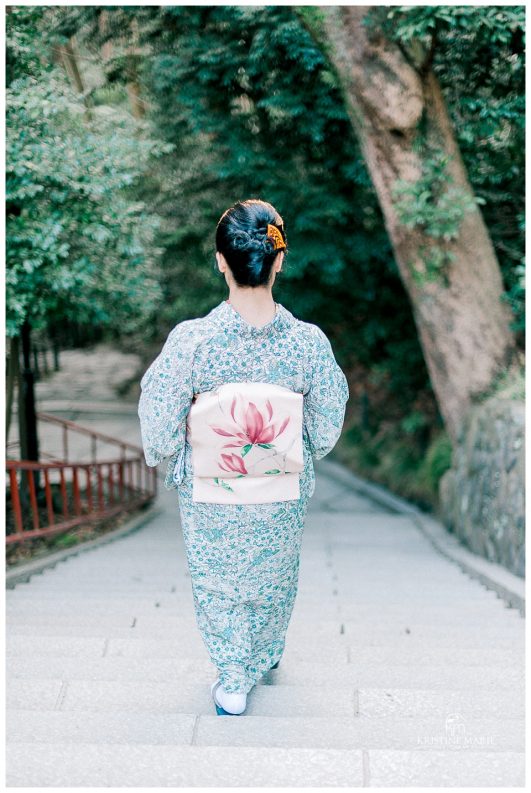
Behind Emi, are rows and rows of sake barrels. They are usually opened on New Year’s Day.
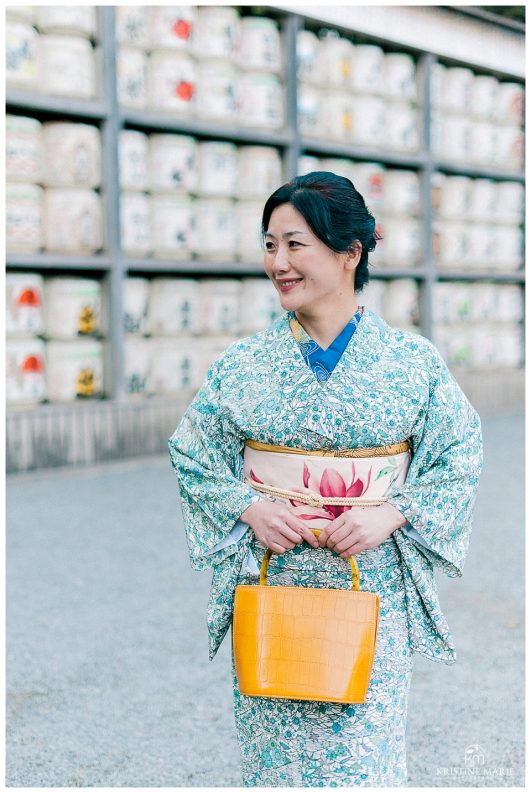
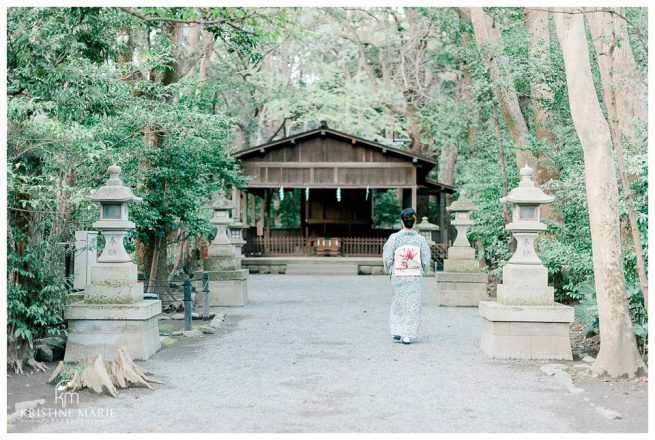
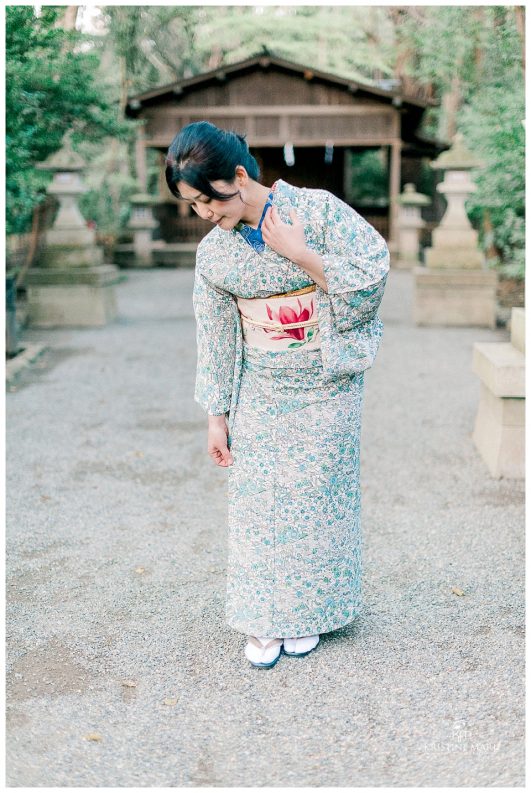
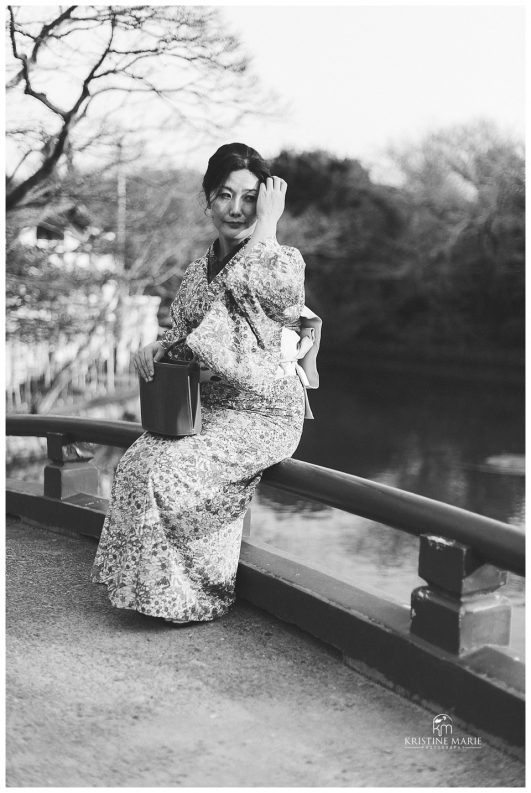
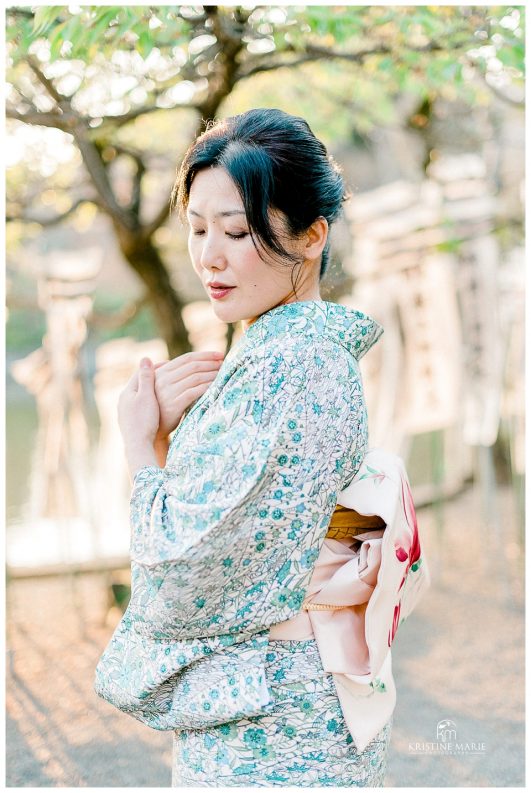
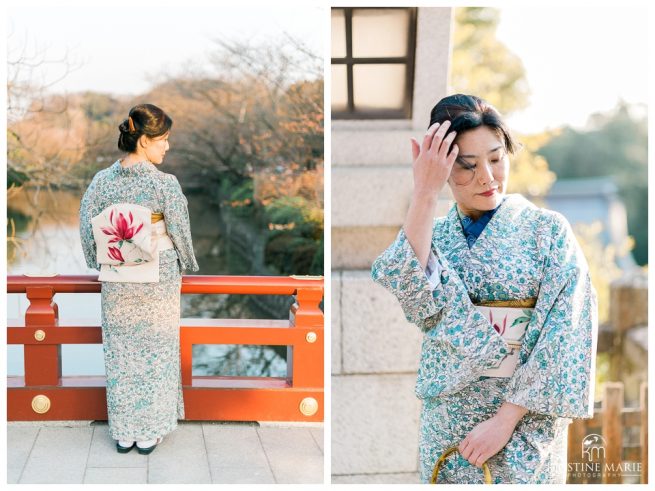
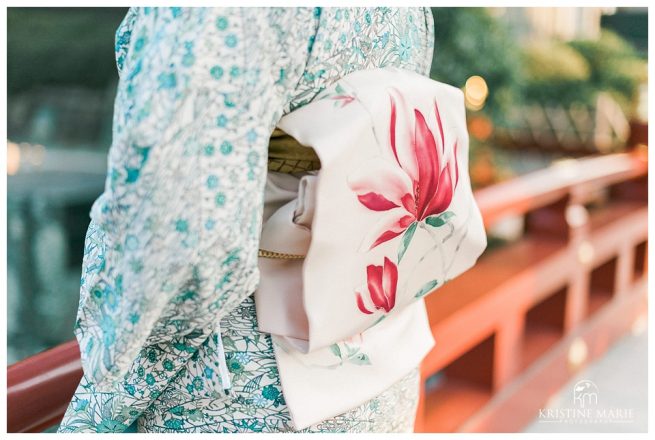
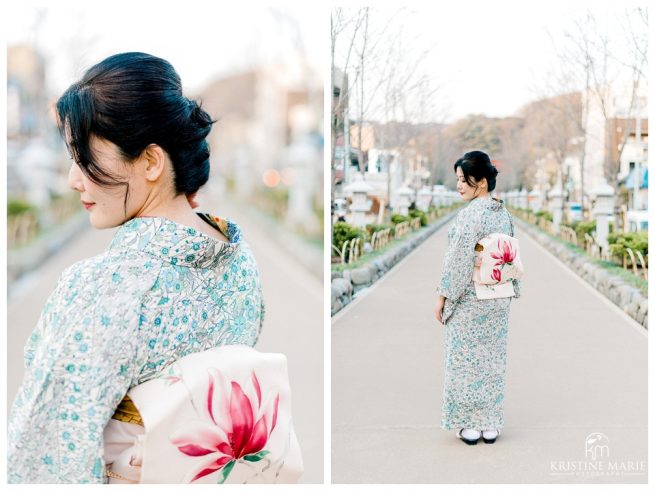
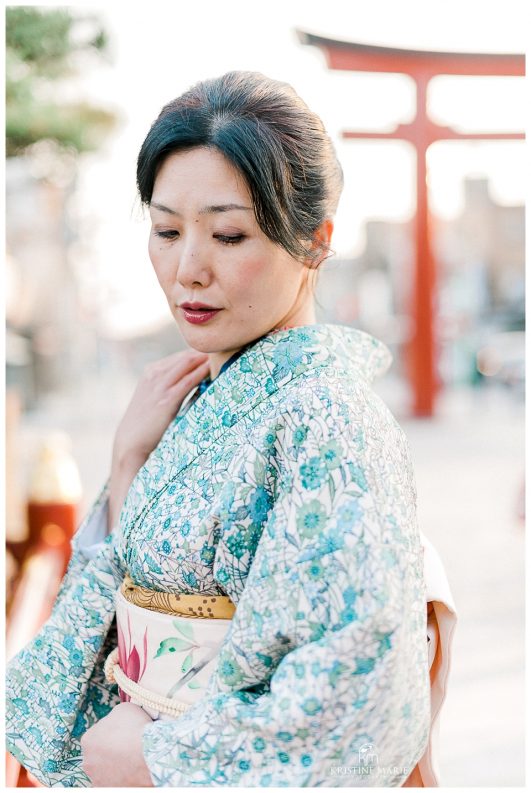
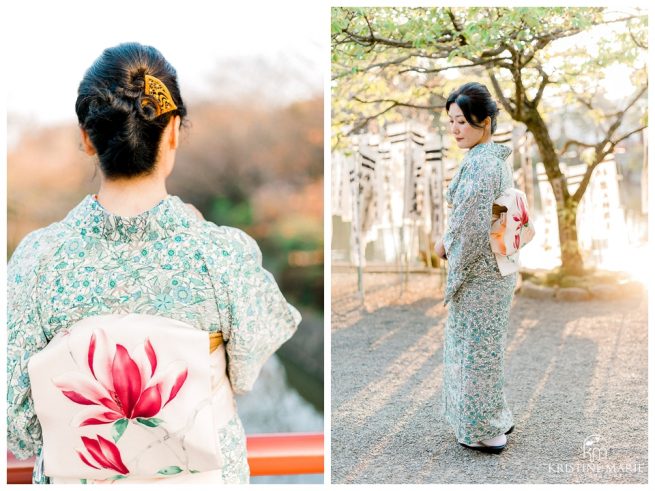
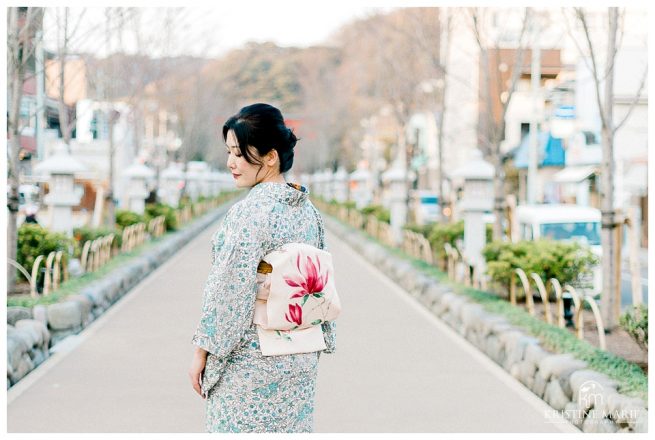
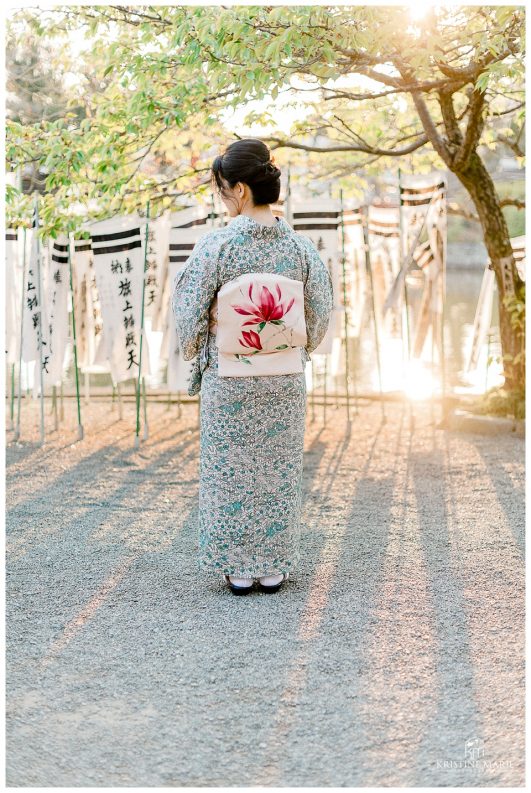
I love how detailed, different, and colorful kimonos are. Below are some behind-the-scenes photos of how kimonos are put on.
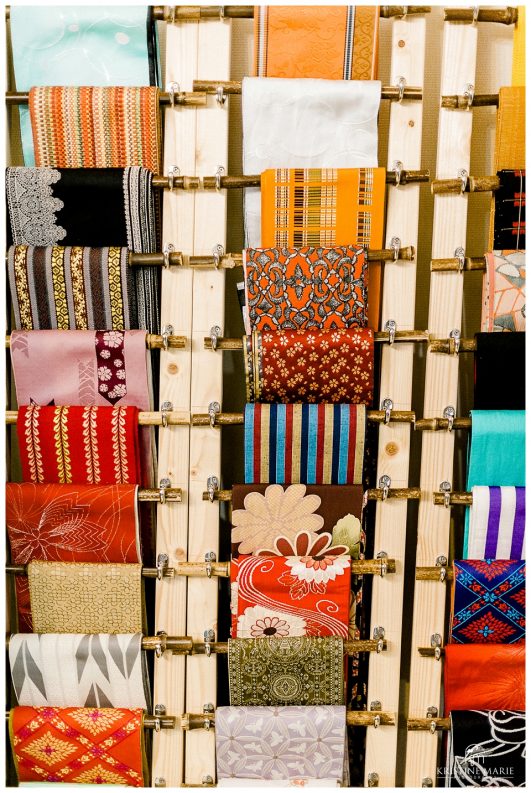
Most modern Japanese women do not own or wear kimono on a regular basis. On special occasions, kimonos are worn. There are many places where a kimono can be rented.
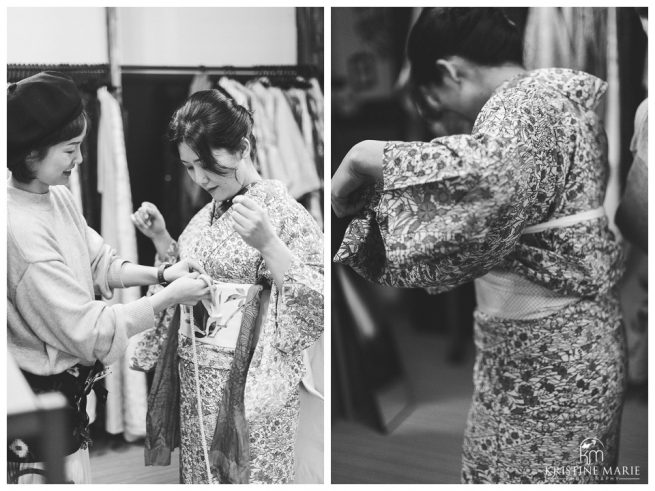
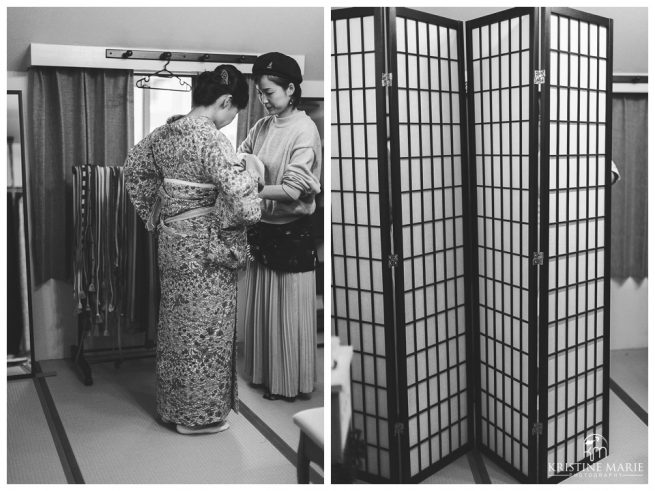
Emi, thank you for a wonderful time in Kamakura! I hope you enjoy the photos.
Warmly,

